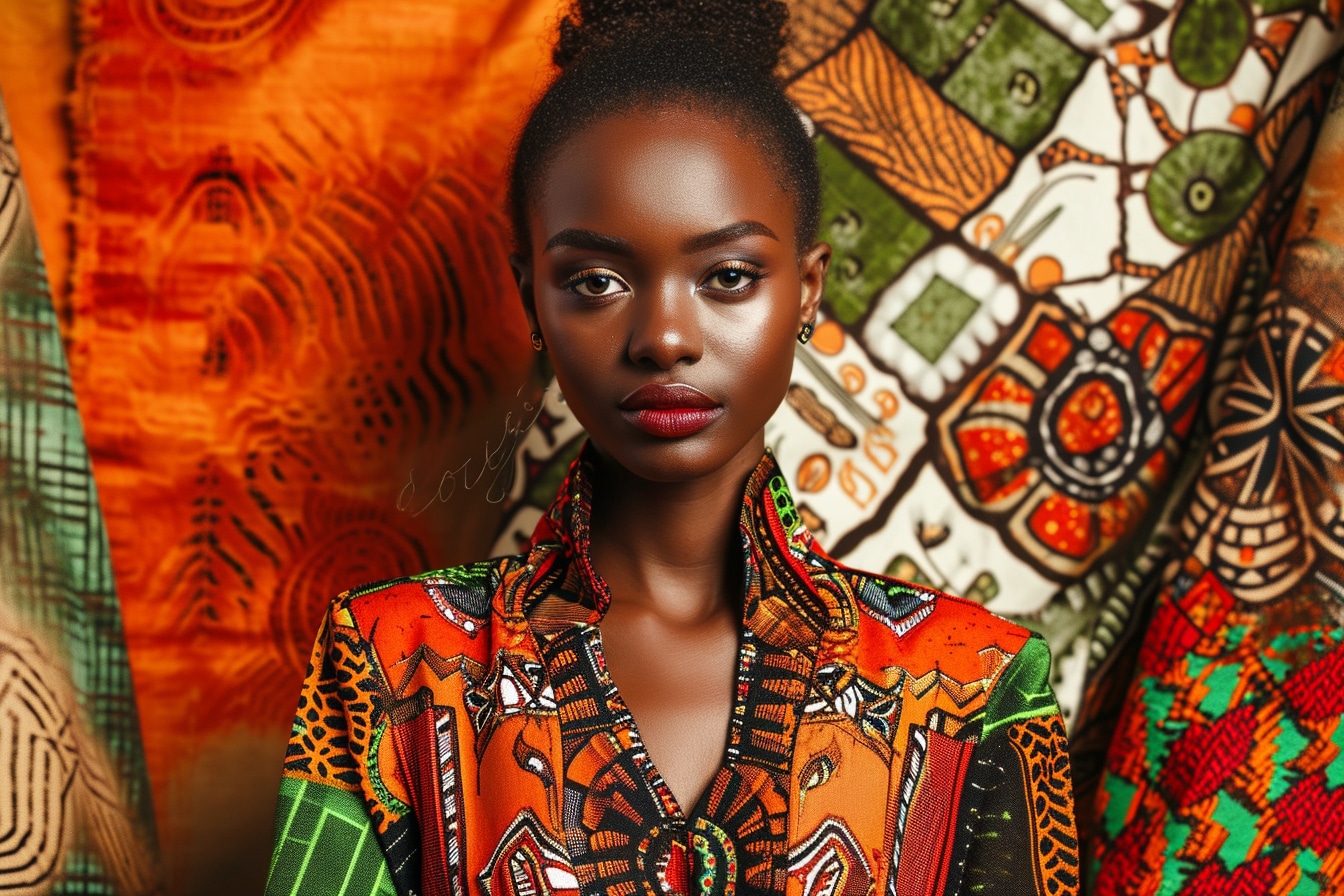The artistic expression that characterizes African fashion has crossed continents and eras, infusing the world of haute couture with colorful dynamism and cultural richness. It’s interesting to look at those who have been inspired by African fashion. To better understand this impact, it’s essential to look at the designers who have drawn on this stylistic treasure trove. In the first lines of this story, we’ll retrace the steps of haute couture pioneers who were inspired by African textiles, patterns and silhouettes. The rest of our exploration will look at how African fashion permeates contemporary haute couture trends, a way of seeing how traditional weaves and vibrant African prints continue to enrich the most avant-garde collections. Finally, we’ll highlight collaborations between renowned designers and African artisans, testifying to the creative union and mutual respect between these different players. This approach will enable us to grasp the full scope and enduring influence of Africa in the elitist sphere of international fashion.
Haute couture pioneers inspired by African fashion
African fashion, with its shimmering prints and fabrics rich in color and texture, has always been a source of inspiration for great designers. The pioneers of haute couture, seduced by this singular aesthetic, boldly integrated elements of African heritage into their collections, fusing craftsmanship with couture elegance. Among these visionaries, Yves Saint Laurent stands out. His famous “Bambara” collection, presented in 1967, was a vibrant tribute to Africa, with costumes inspired by traditional Malian masks and dresses.
British designer Vivienne Westwood is also renowned for drawing on African cultural diversity to revisit her iconic punk aesthetic. Her striking pieces, such as corsets screen-printed with African motifs or draped skirts featuring the typical bogolan cut (a Malian dyeing technique), have remained etched in the minds of the fashion world.
This dialogue between two worlds can also be seen in the works ofAzzedine Alaïa, who sculpted the female body with remarkable precision, while subtly integrating African motifs and textiles as a chic accent to his timeless dresses. Marking a definitive turn towards a globalized celebration of fashion, these designers embraced the full aesthetic richness offered by the African continent, enriching the visual language of haute couture in a lasting way.
The influence of African fashion on contemporary haute couture trends
Africanness is revealed in silhouettes that emanate from the boundless creativity of designers, filled with shimmering hues and dynamic patterns from the continent. The profound influence of African fashion can be seen in the contemporary collections of haute couture houses, where cultural cross-fertilization becomes an inexhaustible source of inspiration. Offering a breath of fresh air to the industry, this artistic hybridization leads to an aesthetic renewal in which bold colors and geometric prints take center stage.
Designers draw on this heritage to enrich their visual vocabulary, while paying tribute to the richness of a land with diverse artistic horizons. Traditional African textiles, such as wax, bogolan and kente, infuse high-end pieces with character and storytelling, often reinterpreted to appeal to a discerning clientele. The dialogue established between these age-old fabrics and the structured cuts of the luxury world evokes a new aesthetic, symbolizing a globalization that respects roots and traditions.
It’s not just the raw materials that capture the attention of the big names; it’s also the art of draping, practiced by several African peoples, which has influenced many seasonal collections by proposing a different body language. Volumes are revisited with finesse to embrace shapes or, on the contrary, express casual freedom. In this transcontinental creative explosion, we also note the growing presence of sophisticated handcrafted accessories – multicolored beads or jewelry in natural materials – as accents on streamlined garments.
In the end, this successful assimilation not only enabled global designers to distinguish themselves through their innovative approaches, but also served as a springboard for the international recognition of African know-how in the restricted and prized world of haute couture.
Collaborations between haute couture designers and African artisans
The alchemy between the masters of haute couture and the virtuosos of African craftsmanship invariably results in collections that combine refinement and exuberance. These collaborations represent much more than a fusion of know-how; they are a creative dialogue in which traditional African techniques such as weaving, embroidery and dyeing are celebrated and magnified by the innate elegance of the great fashion houses.
The convergence between these two worlds also extends to a shared social responsibility, offering artisans on the African continent a valuable opportunity to enter the international arena while preserving their cultural heritage. Collaborative projects help to tell singular stories woven in the heart of villages, shedding light on ancestral skills that often go unrecognized.
Yves Saint Laurent, for example, has drawn on the colorful spirit of wax prints for some of its lines, while Stella McCartney has incorporated the delicate work of Shweshwe embroidery by collectives of craftswomen into its collections. These initiatives are a powerful vector of economic empowerment for the communities involved, and demonstrate the positive impact that luxury can have when anchored in a reasoned ethical approach.
These partnerships also denote a progressive shift in the industry, where environmental responsibility and recognition of African artisanal talent are becoming an integral part of the creative process. In this way, each garment resulting from these collaborations becomes a cultural ambassador, proudly bearing the aesthetic heritage of a plural Africa within a territory traditionally dominated by Western values.
We recommend these other pages:
- Is African fashion represented on international catwalks?
- Is African fashion well received on haute couture catwalks?
- What challenges do African designers face on the haute couture catwalk?
- Which African garments are the most popular on haute couture catwalks?
- Are there any specific events dedicated to African fashion in haute couture?

